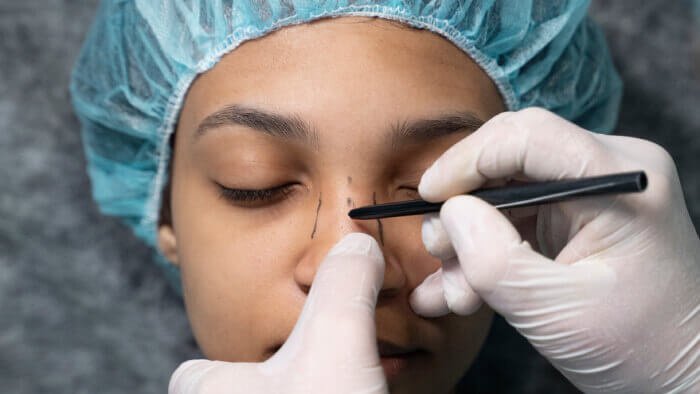A deep understanding of rhinoplasty
Content
- What is rhinoplasty?
- Types of rhinoplasty
- Rhinoplasty techniques
- The surgical process of rhinoplasty
- Recovery after rhinoplasty
- Benefits of rhinoplasty
- Who are the ideal candidates for rhinoplasty?
- Different terms and alternative names for rinoplasticity.
- Understanding rhinoplasty from real people's perspectives
- Conclusion
Rhinoplasty is a popular cosmetic surgical procedure that focuses on reshaping and enhancing the appearance of the nose. This surgical technique has gained immense popularity over the years, not only for its aesthetic benefits but also for its potential to improve the function of the nose.
In this article, we will delve into the details of rhinoplasty, exploring common types and techniques of rhinoplasty, the surgical process, recovery, and the potential benefits it offers to individuals seeking nose enhancement.

What is rhinoplasty?
Rhinoplasty is a surgical procedure aimed at altering the shape, size, and proportions of the nose.It can be performed for various reasons, including improving the appearance of the nose, enhancing facial harmony, or correcting structural issues that affect breathing.
Surgeons must have a deep understanding of facial anatomy, particularly the nasal structures, to achieve a harmonious and natural result.
Types of rhinoplasty
Two primary types of rhinoplasty: cosmetic rhinoplasty and functional rhinoplasty.
A. Cosmetic rhinoplasty
Cosmetic rhinoplasty is the most common type of rhinoplasty. It is sought by individuals who wish to change the aesthetic aspects of their nose. People often opt for cosmetic rhinoplasty to:
- Reduce or increase the size of the nose.
- Reshape the nasal tip.
- Correct asymmetry or deformities.
- Correct a hump on the bridge of the nose.
- Narrow the nostrils.
B. Functional rhinoplasty
Functional rhinoplasty, on the other hand, focuses on improving the functionality of the nose. It is typically performed to correct structural issues, such as a deviated septum, that impede proper breathing. This type of rhinoplasty not only enhances appearance but also resolves medical problems associated with nasal function.
Rhinoplasty techniques
There are two primary techniques for rhinoplasty:
A. Open rhinoplasty
In open rhinoplasty, an incision is made across the columella (the soft tissue between the nostrils). This method provides the surgeon with greater access and visibility, but it might leave a small, albeit typically inconspicuous, scar.
B. Closed rhinoplasty
Closed rhinoplasty involves making all incisions within the nose, leaving no external scars. While this method offers limited visibility compared to open rhinoplasty, it may result in a quicker recovery and reduced swelling.
The surgical process of rhinoplasty
- Consultation: The initial meeting with a surgeon to discuss your goals and determine if you're a suitable candidate for rhinoplasty.
- Anesthesia: Anesthetic agents are administered to ensure you're comfortable and pain-free during the procedure.
- Incisions: Small openings are made, either inside the nostrils (closed rhinoplasty) or on the columella (open rhinoplasty), to access and reshape the nasal structures.
- Reshaping the nose: The surgeon modifies the nasal structures, including addressing humps, cartilage, bone adjustments, and septum corrections to achieve the desired results.
- Closing the incisions: After reshaping, incisions are closed using sutures or tissue glue.
- Nasal packing and splints: In some cases, soft packing and external splints or casts may be used to support the newly shaped nose during the initial healing phase.
- Recovery and follow-Up: You'll recover from the procedure, experiencing some swelling and bruising, and attend follow-up appointments with the surgeon to monitor your healing progress and address any concerns.
Recovery after rhinoplasty
The recovery period after rhinoplasty varies from person to person, but there are some general guidelines to follow.
- Immediate post-op: Right after the procedure, you'll be monitored in a recovery area. You may have packing inside your nose and an external splint or cast to support the newly shaped nose.
- Nasal stuffiness: Your nose might feel congested due to swelling and nasal packing. Breathing through your mouth is common initially.
- Downtime: Plan for about 1-2 weeks off from work or other activities. Strenuous physical activities should be avoided for several weeks.
- Follow-up appointments: You will have follow-up appointments with your surgeon to monitor your healing progress. The external splint or cast is usually removed within a week.
- Long-term healing: Full recovery can take several months. While most swelling and bruising subside within a few weeks, it may take up to a year for the final results to become apparent as the nose settles into its new shape.
- Final results: Once the healing is complete, you'll be able to fully appreciate the final results of your rhinoplasty, which should be in line with your pre-surgery goals.
Benefits of rhinoplasty
- Improved self-esteem and confidence: One of the most significant benefits of rhinoplasty is the boost in self-esteem and self-confidence that many patients experience. People who have long been self-conscious about the shape or size of their nose often find a newfound sense of self-assurance after the procedure. This improved self-image can positively impact various aspects of their lives, from personal relationships to professional opportunities.
- Enhanced facial harmony: The nose plays a pivotal role in facial aesthetics. A well-proportioned and harmonious nose can have a transformative effect on an individual's overall appearance. Rhinoplasty allows for adjustments to ensure that the nose complements the other facial features, resulting in a more balanced and attractive look.
- Functional improvement: Functional rhinoplasty, aimed at correcting structural issues within the nose, can bring significant relief to individuals who suffer from breathing difficulties. Conditions like a deviated septum, enlarged turbinates, or collapsed nasal valves can hinder proper airflow. Functional rhinoplasty not only enhances aesthetics but also improves nasal function, leading to better overall health and quality of life.
- Correction of trauma or birth defects: Rhinoplasty can be a life-changing procedure for individuals who have experienced trauma to the nose or were born with congenital defects. It can restore normal function and appearance, allowing these individuals to regain their confidence and improve their overall quality of life.
Who are the ideal candidates for rhinoplasty?
The ideal candidates for rhinoplasty are individuals who have specific concerns or desires related to the appearance or function of their nose.
- Individuals with aesthetic concerns: Ideal candidates for cosmetic rhinoplasty are those who have specific aesthetic concerns about their nose. These concerns may include the size, shape, symmetry, or proportion of the nose in relation to the rest of their facial features.
- Individuals with functional concerns: For functional rhinoplasty, ideal candidates are those who have specific functional issues with their nose. This may include difficulty breathing due to a deviated septum, structural abnormalities, or other nasal obstructions.
- Individuals with realistic expectations: A qualified surgeon will discuss what can be achieved and what cannot, ensuring that patients understand the limitations of the procedure. Unrealistic expectations can lead to dissatisfaction with the results.
- Individuals with good general health: Ideal candidates should be in good overall health. They should not have any underlying medical conditions that could increase the risks associated with surgery or impede the healing process. It's essential for candidates to provide their surgeon with a complete medical history.
- Individuals who are non-smokers: Non-smokers are generally better candidates for rhinoplasty. Smoking can impair the healing process and increase the risk of complications. Surgeons often advise patients to quit smoking for a period before and after surgery.
Different terms and alternative names for rinoplasticity.
Different terms and alternative names are often employed for the rhinoplasty procedure, depending on the specific goals or techniques utilized.
- Nasal Surgery: This is a more general term that encompasses various surgical procedures related to the nose, including rhinoplasty.
- Nose Reshaping: This term is descriptive and highlights the goal of the procedure, which is to reshape the nose.
- Nose Job: A colloquial term commonly used to describe rhinoplasty.
- Nasal Reconstruction: Used in cases where the surgery is performed to correct deformities resulting from injuries, congenital conditions, or diseases.
- Nasal Aesthetic Surgery: This term emphasizes the cosmetic aspect of rhinoplasty.
- Settorinoplastica: When both cosmetic and functional improvements are made, including correction of the nasal septum, it's referred to as septorhinoplasty.
Understanding rhinoplasty from real people's perspectives
Many of our patients have shared their experiences after rhinoplasty, telling us how the procedure has not only changed their appearance but also their self-confidence and overall well-being.
A 28-year-old patient of ours shared that after the operation, she feels freer to be photographed from any angle and is more satisfied with her appearance.
Another patient of ours expressed immense relief after correcting a deviated septum; he can now breathe freely and enjoys a more restful sleep.
While another patient, who had always been self-conscious about a prominent nasal hump, told us that post-surgery, she feels a renewed sense of confidence in social situations, no longer feeling the need to hide or shy away from conversations. This transformation in her demeanor and increased self-assuredness speaks volumes about the positive impact Rhinoplasty can have on an individual's life.
Conclusion
Rhinoplasty is a versatile surgical procedure that combines both aesthetic and functional objectives. Whether it's for enhancing appearance, correcting structural issues, or achieving both, rhinoplasty can be a life-changing experience.
The journey to a successful rhinoplasty is underpinned by the expertise of the surgeon you choose. We, at Albania Medical Tour, take immense pride in boasting some of the best doctors in the Rhinoplasty field. If you're contemplating this significant transformation in your life, we stand as the paragon of excellence and assurance. Entrust us with this pivotal decision, and be confident that you're making the right choice for an enriching future.


